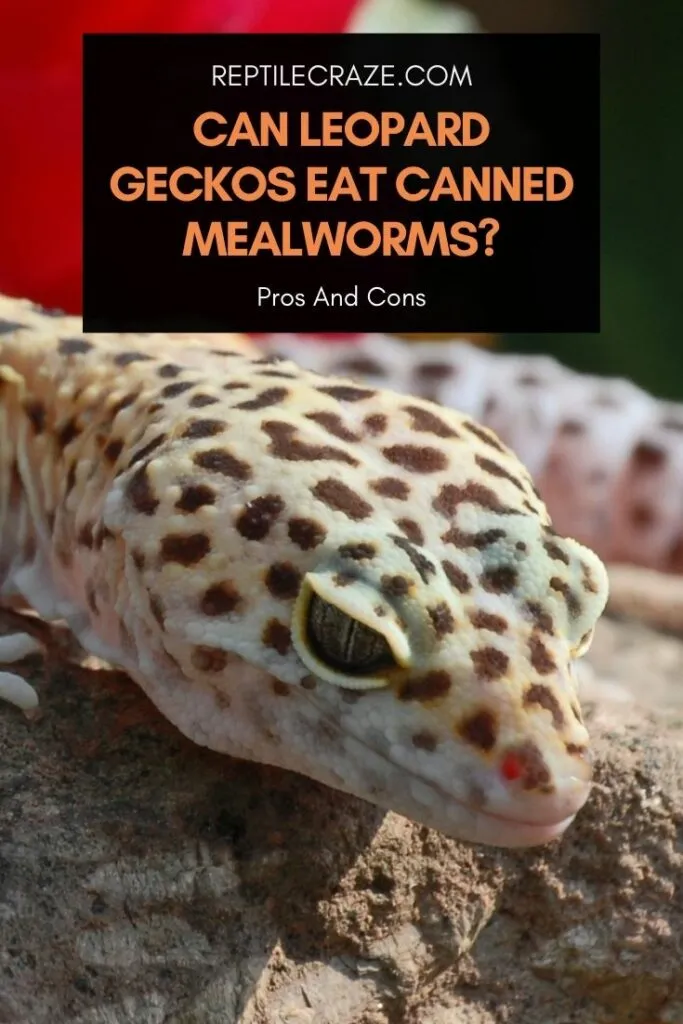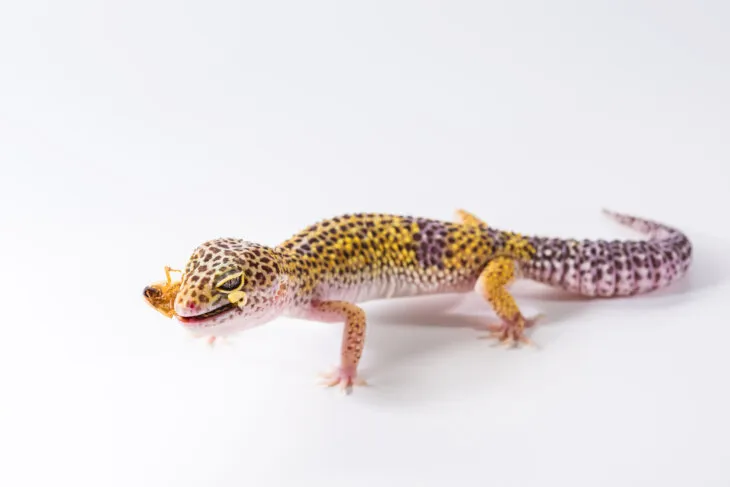
When you get a leopard gecko, one of the first things you look for is an easy way to feed it. Amongst the range of feeds out there, canned mealworms certainly look like a convenient option! But what are the benefits of canned mealworms for leopard geckos? Are they a good choice in the long term?
Canned mealworms can be fed to leopard geckos, but they shouldn’t make up their whole diet as they can’t be gut-loaded. Besides that, since dead mealworms don’t move or try to escape, they provide no mental stimulation for leopard geckos.
In this article, we will look at the pros and cons of feeding canned mealworms to your leopard geckos, how they match up to other insect feeder diets, and how to prep a canned mealworm snack for your leo.
Table of Contents
Pros and cons of feeding canned mealworms to leopard geckos
Aside from being a convenient way to store backup
But there are some drawbacks that mean you can’t rely on canned mealworms for your gecko’s entire diet.
Pros
- Canned mealworms, unlike live crickets, do not impose danger to your leos by nibbling on your pets’ vulnerable tail and toes.
- Unlike live mealworms, they will not try to escape from the feeding dish. If you have tried feeding your leopard geckos with live mealworms, you may notice them trying to run off, although they are slower than other live feeder insects.
- Unlike live mealworms when they get out of their feeding dish, canned mealworms will not feed on pieces of dirt inside the gecko
tank . You don’t have to worry that they will feed on gecko poop which will upset your gecko’s stomach when eaten. - Canned mealworms will also not die during the shipping process, or try to get out of their packaging. Upon the arrival of your canned mealworms, simply put them on the shelf, ready to be fed to your gecko in case of emergencies, or if you’re going away on vacation and would be leaving your gecko with somebody else.
Cons
- Canned mealworms are definitely not as nutritious as live mealworms.
- They do not encourage your leos to exercise and their hunting skills may remain underdeveloped. Because canned mealworms are not moving, they may not look as appetizing as live feeder insects.
- Canned mealworms cannot be gut-loaded either. Although there may be labels on the can that say they’re filled with nutrients and have been properly gut-loaded, you don’t exactly know what your mealworms have eaten before you feed them to your leos.
What is the difference between canned mealworms and dried mealworms?
Canned mealworms and dried mealworms are both insect feeds made from mealworms. Mealworms are worm-like larvae of a species of darkling beetle, Tenebrio monitor.
They are usually used for feeding insectivorous invertebrates, amphibians, birds, and reptiles like the leopard gecko. They typically measure around 2 cm in length.
They are usually colored brown but may also be white when they molt 9-20 times during their larval stage.
Canned and dried mealworms have some similarities. They are both no longer alive when fed to your leopard geckos. Because of this, they can be transported easily without the need for high-maintenance care.
Dried mealworms
Dried mealworms are dead worms that have been dried and packed. They have a really low moisture content, and they can make your gecko dehydrated if no other water source is offered.
This can cause more complicated health problems like impaction. You can read more about feeding dried mealworms to your leopard gecko here.

Canned mealworms
Canned mealworms are mealworms that are often ‘cooked in the can’. Each can holds around 30-60 worms per can, depending on the size! Although the mealworms are no longer alive due to the canning process, you can still get preserved freshness from them.
Canned mealworms are softer than dried mealworms. Their outer covering or exoskeleton has a low chitin content which makes it easier for your gecko to chew on and digest them.
Canned mealworms contain more moisture since they have natural juices inside their cans. Some canned mealworms smell bad once their containers have been opened.
After opening, they can only last 3 to 10 days in the refrigerator. Dried mealworms, on the other hand, have a shelf life of up to 2 years in an airtight container stored in a cool, dry place.
How nutritious are canned or dried mealworms?
The nutritional values of canned mealworms are fairly similar to those of live mealworms.
| Nutritional component | Canned * | Dried ** | Live ** |
| Protein | 17.9% | 53% | 20.3% |
| Fat | 5.9% | 28% | 13% |
| Fiber | 3.5% | 6% | 2% |
| Moisture | 68% | 5% | 62% |
How do I feed leopard geckos with canned mealworms?
If you’ve decided to try feeding canned mealworms to your leopard gecko, you need to know how to feed them, as well as how often and how much.
Because geckos are used to catching live prey, they might need some encouragement to eat a canned mealworm! This video shows how to tempt a leo with a canned mealworm snack.
How big should each serving be?
When feeding mealworms to your geckos, moderation is key. You should reduce the number of canned mealworms you give, as live meals are recommended for both growing and adult leopard geckos.
| Leopard Gecko life stage | How often | Portion size |
| Baby (0 to 6 months old) | Daily unless sick or stressed | 5-7 small mealworms |
| Juvenile (6 to 12 months old) | Every other day | 5-7 small mealworms |
| Adult (more than 12 months old) | Every 3 to 4 days | 6-7 large mealworms |
Live crickets are a good alternative to mealworms because of their fast pace (encouraging exercise and refining hunting skills) and high nutritional and moisture content.
Conclusion
Canned mealworms may be readily available in stores, but they should be fed to your leos in moderation. They should not completely substitute nutritional sources from live insects.
Live prey also help develop your geckos’ hunting and sensory skills. They not only keep your leopard geckos physically healthy but will also enhance their mental well-being.
- Enchi Ball Python: A Unique and Stunning Morph of Python regius - March 27, 2025
- Emerald Tree Monitor: The Enigmatic Green Guardian of the Rainforest - March 26, 2025
- The Egyptian Cobra (Naja haje): A Fascinating Serpent - March 25, 2025
